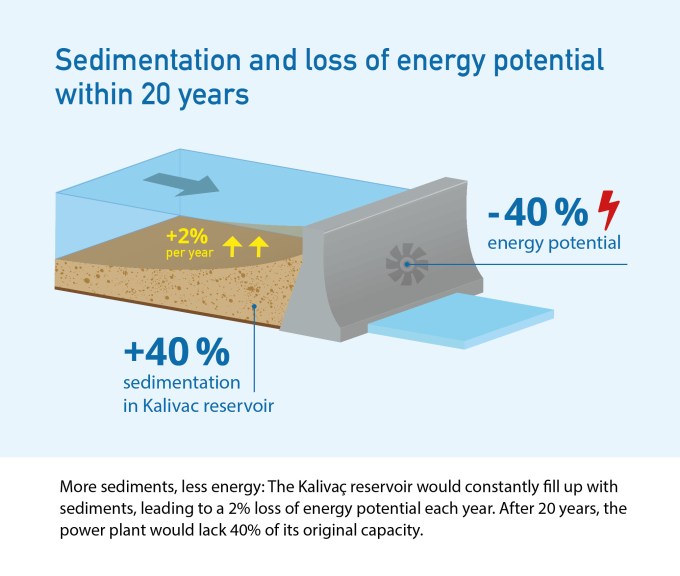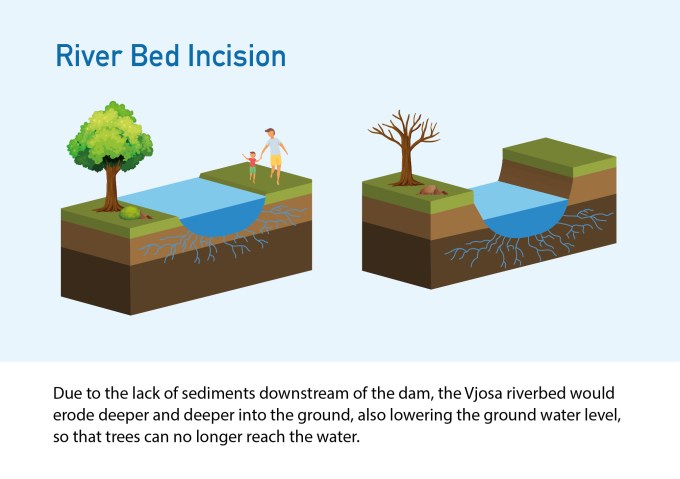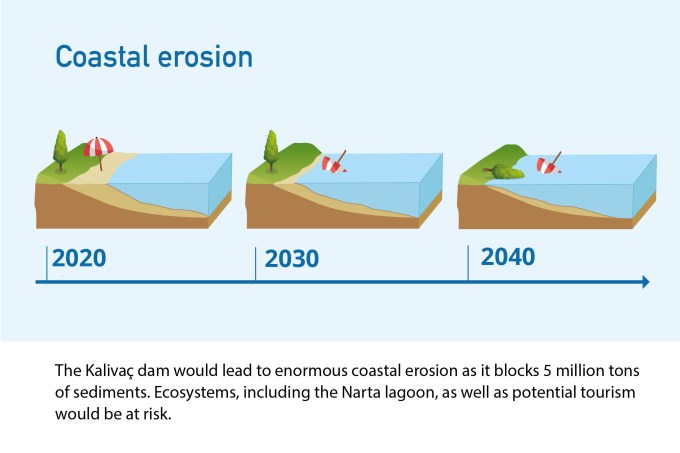++ Study reveals risks of high economic costs and ecological degradation by planned hydropower projects Kalivaç and Poçem ++ Severe adverse impacts on Albanian agriculture and tourism expected ++
Tirana, Radolfzell, Vienna, May 14th 2019. Today, scientists from the University of Natural Resources in Vienna, Austria, and the Polytechnic University of Tirana, Albania, presented the findings of a two-year sediment assessment on the Vjosa River in Tirana. They evaluated how the planned hydropower projects (HPP) in Poçem and Kalivaç would affect the natural flow of sediment that is currently transported to the coast by the Vjosa River. Study results show that the reservoirs would fill up within 30-60 years at maximum.


“Due to the high sediment transport rates of the Vjosa, modelling shows an annual reservoir loss of about 2% in the case of Kalivaç and even more than 2% in the case of Poçem. This is more than double the global average of annual storage losses, considerably reducing energy production starting from year one of operation”, said Christoph Hauer from the University of Natural Resources in Vienna.
Consequently, it is expected that there will be very high economic costs for sediment management and treatment, in order to avoid serious technical problems. The study(in Albanian) shows that the lack of sediment transport will lead to fragmentation of the riverbed downstream, affecting groundwater levels and causing coastal erosion as well as loss of biodiversity. All these factors are expected to have harmful effects on the tourism and agriculture sectors in the Vjosa watershed.


“The results of this study are an important proof that shows that the expectations of the Albanian government for the production of energy from HPPs in the Vjosë river will not be fulfilled. On the contrary, these projects will only bring a situation of 3-fold loss – in economic, environmental and social terms”, said Olsi Nika from EcoAlbania.
The Vjosa in Albania is one of Europe’s last remaining wild rivers, flowing freely over 270 kilometres. With its main source on Greek territory, the first 80 kilometres of the river are known as Aoos. Once it runs into Albania, it becomes known as Vjosa. The lower parts of the river flows through extensive wetlands, which are habitats for fish, birds and other wildlife. The Vjosa flows into the sea just north of the Narta lagoon – one of the biggest and ecologically richest lagoons in Albania, and a designated Managed Nature Reserve.
“The Vjosa is without par in Europe and must be preserved as part of our natural heritage. Hydropower projects will completely and irrecoverably destroy this unique river ecosystem. Hydropower doesn’t deserve the notion of being ‘green’, as it is always at the expense of biodiversity in riverine landscapes”, said Theresa Schiller, coordinator of the ‘Save the Blue Heart of Europe’ campaign at EuroNatur.







